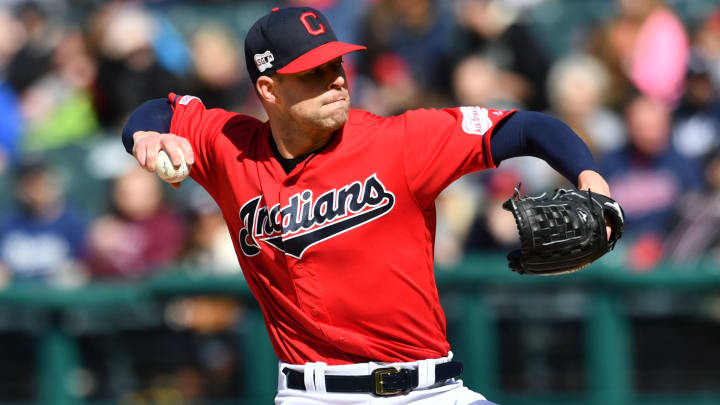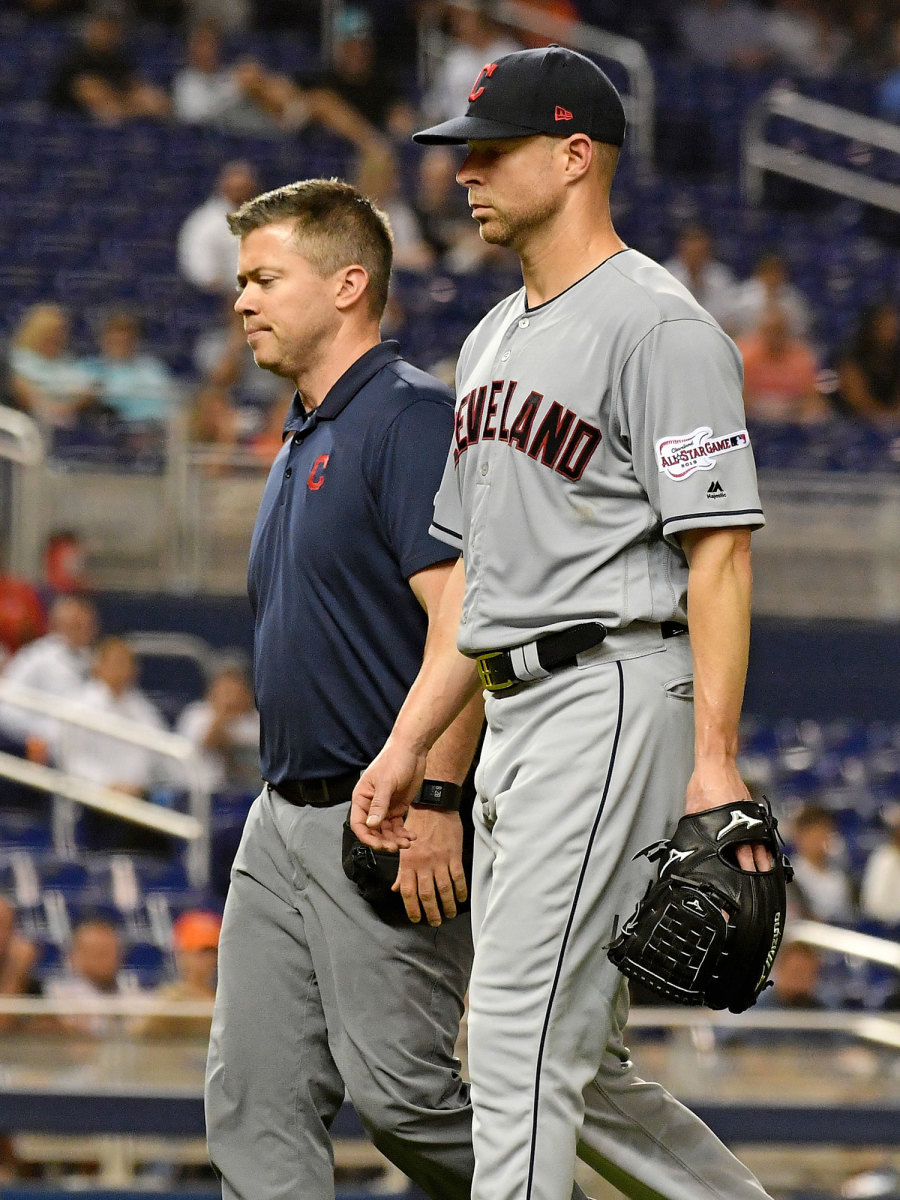Rangers' Corey Kluber Blockbuster Shrinks Gap in AL West

The second week of December wasn’t kind to the Texas Rangers. They failed to sign one of the big three free agents—making things worse, their main target, Anthony Rendon, went to a division rival—and a fire broke out at their future ballpark, which is set to open this upcoming season.
But the Rangers’ misfortune turned on Sunday when the acquired Corey Kluber from Cleveland in exchange for centerfielder Delino DeShields Jr. and relief pitcher Emmanuel Clase. That’s a relatively small price to pay for a two-time Cy Young Award pitcher who in 2020 will make $17.5 million—less than half of what the Yankees will pay Gerrit Cole per year.
More importantly, though, than the favorable financial value of Kluber is what his addition means for the Texas rotation and, consequently, the American League West. The power dynamic in the division is shifting, in no small part because of the moves the Rangers have made this offseason. No longer is it just the Astros and Everyone Else. For the first time since 2017, when Houston looked like it would be baseball’s model franchise for years to come, there’s some uncertainty in the AL West.
Rewind to July 31, when the Astros snagged Zack Greinke from the Diamondbacks and looked unstoppable. Greinke joined their two aces, Justin Verlander and Cole, to form the best rotation in the league. They had baseball’s deepest lineup, with MVP runner-up Alex Bregman, Jose Altuve, George Springer and Rookie of the Year Yordan Alvarez. The bullpen was better than it was when they won the 2017 World Series. There was little doubt they were the best team in the sport.
Corey Kluber spent the last 10 years in our organization; 9 of those at the Big League level.
— Cleveland Guardians (@CleGuardians) December 15, 2019
For 2 Cy Young Awards, 3 All-Star Game appearances, an incredible 2016 Postseason run, and so many incredible memories in a Tribe uniform … Thank you, Corey. pic.twitter.com/NGjkSOBW9G
What a difference four and a half months can make. Texas, not Houston, has the best rotation in the division. Before getting Kluber, the Rangers signed righthanders Kyle Gibson and Jordan Lyles, two pitchers with electric stuff and inconsistent track records to join a rotation that already featured Lance Lynn and Mike Minor.
Gibson, who signed a three-year, $28 million contract late last month, is coming off a down year, but there's reason to think last season may have been a fluke. He caught E. coli while on an offseason mission trip to Haiti and the Dominican Republic that affected his Spring Training and start to the season. Then he was placed on the injured list with ulcerative colitis on Sept. 1 after trying to pitch through it. He lost 20 pounds during the season and still posted a career-best 93-mph average fastball velocity.
Lyles was traded to the Brewers midway through each of the last two seasons and both years became an important piece of their postseason pushes. His improvement with Milwaukee can be attributed to a change in pitch selection, giving Texas reason to believe his production is sustainable. Lyles used to rely on his sinker when he was with the Pirates and Rockies. Once he moved away from his sinker and instead used an elevated four-seam fastball-curveball combo to get hitters out, he started having success.
“[Lyles] could throw that breaking ball at any count, any time, and he did,” Rangers manager Chris Woodward said at the Winter Meetings last week. “He did it against us and he had a lot of success with it.
“Honestly I think Jordan is scratching the surface on finding out how good he can be, and that was intriguing for me to get him around the guys and talk to our pitching staff and talk to the other pitchers, and we can make him sustainably good.”

And here’s where Kluber comes in, giving Texas another reliable, steady veteran to anchor the now five-deep rotation. Kluber missed almost all of the 2019 season with a broken right forearm and a strained oblique muscle but is now fully recovered. The hope is that he can return to the pitcher he was with Cleveland from 2014-18, when he won two Cy Young Awards, finished third twice and posted a 151 ERA+, meaning his ERA was 51% better than league average.
Plus, trading for Kluber means the Angels don’t snag him, too, after already outbidding Texas for Rendon. Both they and the Dodgers were reportedly the other teams in the mix for him.
The Rangers could have filled that fifth rotation spot with a lesser, younger, cheaper arm, and they still would have vastly improved their chances at competing with the other four possible contenders in the AL West (the Mariners remain irrelevant on that front).
“We don't need another starting pitcher, but I think I will always invite another starting pitcher,” Woodward said last week. “I'm biased with our own guys that we have, the younger guys. I feel like a lot of them have upside that could take that next step and really help us.”
But if the Rangers’ goal was not just to build a contender but to truly make a splash this offseason to generate excitement for the opening of the new Globe Life Park, Kluber was the perfect way to do it without promising anyone a quarter-billion dollars.
Now, they still in theory have the resources to sign Josh Donaldson to play third base—unless he really is out of their price range—and/or another impact, middle-of-the-order bat. They’re still at least a few hitters away from being on the offensive level of the Astros, A’s and even the Angels after they added Rendon. But there is a blueprint for the Rangers to get there, and now that their rotation is set, they can completely devote their attention to improving their lineup.
Like the new park, Kluber gives the Rangers a solid foundation to compete in 2020. They’re not yet a finished product, and an unexpected problem is always a possibility, but they’re still on schedule for a grand opening come the end of March.
